| Pet parents know that good joint health is crucial to the long-term wellbeing of companion animals. To help maintain the health of the entire musculoskeletal system, give your dog or cat the new and improved Agility Formula. With MSM, glucosamine, sea mussels, hyaluronic acid (from Kolla2®), vitamins E and C, boswellia serrata, alfalfa leaf extract, chondroitin sulfate, manganese and boron, Agility offers a comprehensive approach to help pets enjoy a lifetime of mobility. |
|
Recent estimates put the number of dogs suffering from joint disease and chronic pain at nearly ten million, a significant percentage of the population. And, with more and more senior pet kids in American homes, those numbers are likely to remain high. Fortunately, veterinarians have adopted a treatment previously used only for humans, and it’s one that is dramatically improving the quality of life for pet patients. In this episode of Pet Talk, Dr. Sarah explains how laser therapy offers a ray of hope for dogs and cats dealing with the pain associated with degenerative joint disease. Be sure to share this important message on alternative therapies with your fellow pet parents!
1 Comment
Every home with dogs should have apple cider vinegar. It's a remedy with multiple uses for dogs, cats, horse & people! It can help in alleviating allergies, arthritis, establishing correct pH balance. If you notice your dog has itchy skin or licks it's feet, has ears that smell or have discharge, if they are developing hot spots or seem to be picky about their food, using Apple Cider Vinegar may help For poor appetite, use 1 tablespoon 2 times a day for a 50 pound dog. Adjust as necessary. We put this in their drinking water daily. For itchy skin, hot spots, excessive licking, place Apple Cider Vinegar in a spray bottle and the affected areas. It should clear up within 24-48 hours. If the skin is broken, dilute 50/50 with water and spray the area. Test your dogs PH balance. You can purchase ph strips at your local pharmacy or drug store. Test the urine 1st thing in the morning. It should be between 6.2-6.5 to be in good balance. If it is higher than 7.5, your dogs system is too alkaline and you will need to balance the levels. This helps to keep the digestive track balanced and functioning properly. If you have a dog that has clear, watery discharge from the eyes, a runny nose, or coughs with a liquid sound, use ACV in his or her water. One teaspoon twice a day for a 50 lb. dog will do the job. Other uses for ACV are the prevention of muscle weakness, cramps, feeling the cold, calluses on elbows and hock joints, constipation, bruising too easily, pimples on skin surfaces, twitching of facial muscles, sore joints, arthritis and pus in the urine. There are also reports that it is useful in the prevention of bladder and kidney stones. Fleas, flies, ticks and bacteria, external parasites, ring worm, fungus, staphylococcus, streptococcus, pneumococcus, mange, etc., are unlikely to inhabit a dog whose system is acidic inside and out. Should you ever experience any of these with your dog, bathe with a nice gentle herbal shampoo -- Life's Abundance -- rinse thoroughly, and then sponge on ACV diluted with equal amounts of warm water. Allow your dog to drip dry. It is not necessary to use harsh chemicals for minor flea infestations. All fleas drown in soapy water and the ACV rinse makes the skin too acidic for a re-infestation. If you are worried about picking up fleas when you take your dog away from home, keep some ACV in a spray bottle, and spray your dog before you leave home, and when you get back. Take some with you and keep it in the car, just in case you need it any time. Obviously for major infestations, more drastic measures are necessary. ACV normalizes the pH levels of the skin, makes your dog unpalatable to even the nastiest of parasites or bacteria! About Bragg Apple Cider Vinegar Bragg Organic Apple Cider Vinegar Gallon is made from delicious, healthy, organically grown apples. Apple Cider Vinegar has been highly regarded throughout history. In 400 B.C. the great Hippocrates, Father of Medicine, used it for its amazing health qualities and now you can enjoy it on a daily basis! Processed and bottled in accordance with USDA guidelines, it is Certified Organic by Organic Certifiers and Oregon Tilth; and is Kosher Certified. Bragg Organic Raw Apple Cider Vinegar is full of zesty natural goodness. It's a wholesome way to add delicious flavor to salads, veggies, most foods, and even sprinkle over popcorn. Internal Benefits:
FAQ What is Natural Apple Cider Vinegar? Different from the refined and distilled vinegars usually found in supermarkets, Natural Apple Cider Vinegar is made from fresh, crushed, organically grown apples and allowed to mature in wooden barrels, which boosts its natural fermentation qualities. When mature, it contains a web-like substance, called "mother" that becomes visible when the rich brownish liquid is held to the light. What is the nature of the Mother? The mother is the dark, cloudy substance in the ACV formed from naturally occurring pectin and apple residues - it appears as molecules of protein connected in strand-like chains. The presence of the mother shows that the best part of the apple has not been destroyed. Vinegars containing the mother contain enzymes and minerals that other vinegars may not contain due to overprocessing, filtration and overheating. Is Apple Cider Vinegar safe to take during pregnancy? Bragg Apple Cider Vinegar is safe to take during and after pregnancy. It helps to rid the body of toxins and may even help with any complications that may arise or have arisen with the pregnancy. It supports regularity and promotes digestion. Is it possible to take too much Apple Cider Vinegar? There is no clear limit as to how much Apple Cider Vinegar an individual can or should ingest. However, one should remember that, as with anything in life, one can have "too much of a good thing".For a delicious, ideal pick-me-up at home, work, sports or gym, they recommend taking the Bragg Vinegar Health Drink 3 times daily - upon arising, mid-morning and mid-afternoon. To make the drink, stir 1 to 2 tsps Bragg Organic Vinegar in 8 oz. Glass Purified Water and (optional) to taste 1 to 2 tsps Organic Honey, 100% Maple Syrup, Blackstrap Molasses, or 4 drops herb Stevia. Is it okay to take the Apple Cider Vinegar by itself? It is recommended that you take the Apple Cider Vinegar diluted with water or juice. Because Apple Cider Vinegar acts like a sponge, drawing toxins from the body tissues, it may cause you discomfort if you choose to digest the vinegar using spoonfuls only. What, exactly, are the internal and external benefits attributed to ACV? Following the old cliché, "An apple a day keeps the doctor away," apples are one of the oldest, most nutritious foods on earth. They are rich in potassium, a mineral many of us are deficient in, and a deficiency that causes old age to creep upon us sooner. Calcium maintains our hard tissues such as bones, and potassium is the equivalent to the body’s soft tissues, keeping the body’s flesh and arteries soft and resilient. Fresh, organic apples are used to make Apple Cider Vinegar, which contains necessary ingredients, such as enzymes, and life-stimulating minerals, mainly potassium, in a natural state. Besides being a natural stimulant for vitality, Apple Cider Vinegar cleanses and restores nutrients to the body so that the body can heal itself.
Yes. Bragg Apple Cider Vinegar is Naturally Gluten Free. Is their ACV safe for pets with peanut, gluten (wheat), and tree nut allergies? Yes. The equipment they use to make Bragg ACV is dedicated and not contaminated. BLOATED STOMACH in DOGS
In order to save your dog’s life you must move very quickly. It is crucial that you immediately take your pet to your vet or emergency hospital if you suspect bloat. On arrival depending on how your pet looks they might shoot an X-ray to make sure that it is bloat they are dealing with. Bloat will easily show up on an X-ray. ◥ Bloated Stomach in Dogs When a dog’s stomach fills with gas, it bloats. The expansion of the stomach puts pressure on the diaphragm, which in turn makes it hard for the dog to breathe. The stomach will also twist, causing terrible shock and rapid death. Therefore →→ BLOATING SHOULD ALWAYS BE TREATED AS A DIRE EMERGENCY. ◥ What To Watch For Bloating can happen to any breed of dog at any age. However, large breeds with deep chests, like Great Danes or the large Setters, are more likely to suffer from this type of emergency. In certain instances, bloating is noted when the dog exercises immediately after eating. The most obvious symptom is, of course, an enlarged abdomen. You may also observe labored breathing, excessive drooling, vomiting, a weak pulse, and paleness in the nose and mouth. Click here to find breeds with greatest risk! ◥ Primary Cause Although there are environmental and genetic factors that remain unknown, the chances of bloating are increased by overeating and excessive drinking. Allowing a dog to exercise or especially roll shortly after a meal can also cause problems. ◥ Immediate Care TAKE DOG TO VET RIGHT AWAY. There, he/she will be stabilized and likely undergo gastric decompression. Depending on the circumstances, you may need to treat the dog for shock on your way to the emergency hospital. ◥ Prevention Providing the dog normal-sized food portions and allowing her/him time to digest after a meal can help prevent occurrences of bloating, at all ages. Some veterinarians will recommend that breeds more commonly affected with bloating undergo gastropexy, a surgical procedure in which the stomach is attached to the body wall to prevent it from shifting or twisting. Are you among the millions of pet owners who give your pet treats? Have you ever worried about the safety of those store bought treats or how they might be impacting your pets good health. Treats are a great way to reward your pet or to satisfy their appetite in between meals - but you must choose wisely. All treats should serve a healthy function. Wouldn’t it be amazing if a treat could be tasty as well as contain nothing but healthy ingredients? Unfortunately, many treats available to us today contain very little nutrition. Many treats and chews have no nutritional value, and may even be harmful to our pets health. Not to mention the constant threat of tainted ingredients and recalls. If you want treats that taste good but are actually healthy too, then keep reading. Life’s Abundance offers a variety of different treats to meet your pet’s dietary needs while giving them a treat they’ll love! 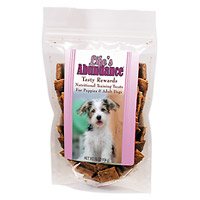 Tasty Rewards Training Treats When training your pet, a reward system is used for them to understand they've done a good job. Well training your pet can now also be beneficial for their health. Tasty Rewards Training Treats contain proteins, minerals, vitamins and essential fatty acids. Their are even ingredients that stimulate brain activity - perfect for learning new things. And, like all of Life’s Abundance products, you’ll find no added chemical preservatives or artificial coloring. With Tasty Rewards Training Treats, discipline can be delicious and healthy for them all at the same time! 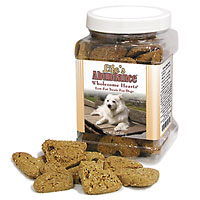 Wholesome Hearts It's hard to say no to a dog who is begging for a treat, but what if he could stand to lose a few pounds off his waistline? Well, by adding Wholesome Hearts to his diet, he can still enjoy a fully nutritious low-fat treat. Even if your dog is in shape, this is a great way to maintain his weight and still give a tasty treat. 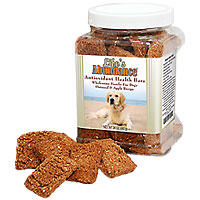 Antioxidant Health Bars Every day Americans grab something to snack on. The number one snacks is a health bar. Your dog can snack the same way we do with Life’s Abundance’s Antioxidant Health Bars. This snack does not simply hold them over till the next meal, but it contains a broad spectrum of antioxidants they may not get anywhere else in their diet. Plus, they are guaranteed to love the taste. 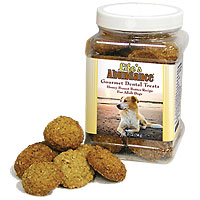 Dental Treats Since every dog needs a good teeth cleaning to stay in top physical health, next time you go to grab a doggie treat, grab the treat that will keep his teeth clean and healthy. This treat is loaded with nutrients to support healthy bones and teeth.
So the next time you choose a treat for your pet, ask yourself,
“Does this treat serve a healthy function?”  As a holistic vet, I’m frequently asked, “How can I deal with my cat’s bad attitude?” The problem area dubbed “feline aggression” can be complicated, upsetting and potentially hazardous for pet parents. Not only can cat bites and scratches really hurt, they can transmit diseases, too, such as cat scratch fever (yes, it is real). While most cat moms and dads prefer a purring lap-warmer, especially on cold winter nights, some felines need extra help learning how to sheathe their claws. Unfortunately, feline aggression is not well understood or handled appropriately. An important first step in dealing with this frustrating issue is to understand the behavior. Learning why a cat lashes out can help pet parents deal with the issue patiently and properly. In this post I’ll be covering the five basic types of aggression in cats. Pain- or Health-Related Aggression A cat who is experiencing pain or ailing may exhibit aggressive behavior, so it’s vital that your first stop be a trip to your vet, especially if what you’re witnessing is a recent change in behavior. Medical conditions that can cause pain and aggression include abscesses, dental disease and arthritis. Additionally, hyperthyroidism is associated with increased aggression in older cats. Alleviation of underlying medical conditions can often resolve the aggressive behavior. Play Aggression This form of aggression is typical of young cats and kittens. You can recognize play aggression by the feline’s posture: stalking or crouching like a lion, lashing the tail from side-to-side, especially when their pupils are dilated. As unsuspecting “prey” passes, whether it’s your dog or your spouse ... pounce! The cat who attacks your ankle and then disappears in a flurry of fur isn’t trying to maim you - he’s playing, albeit aggressively. The best way to address play aggression is integrate a toy, such as a cat fishing pole or a laser pointer, into play sessions. These toys serve a dual purpose - they will hold your cat’s attention while burning off excess energy and keep your hands out of the “strike zone”. A stuffed sock can provide the perfectly-pouncible object. If additional measures are required to curb the behavior, consider blocking access to your cat’s favorite stalking places or use a noise deterrent, such as shaking a can full of coins. Remember that you must use a noise deterrent within the first few seconds of the inappropriate behavior for it to be effective. Never let your cat, even when he is a cute kitty, view you as an acceptable chew-toy. You might also trim her nails to minimize the “ouch factor” (here’s a video that shows you how). Fear Aggression When a fearful cat encounters an unpleasant situation, such as the veterinary office, he will likely take steps to protect himself. Fear clues include crouching with tail and legs tucked under, hissing and baring teeth, flattened ears, dilated pupils and fur standing on end. If your cat is fearful, it is important to identify and avoid, if possible, the thing triggering the fear. To overcome fear aggression, you can try to desensitize your cat to the fear-inducing object by keeping it at a distance and rewarding your cat with treats for non-aggressive behavior. Also, try to minimize stress in a fearful feline’s home environment. If your cat is completely out of control, have your veterinarian refer you to a behavioral specialist who can work with you and possibly prescribe medications to get your cat through the rough spots. Redirected Aggression I like to refer to this type as “innocent bystander aggression”. Redirected aggression typically occurs when a cat is aroused by one stimulus, such as a bird outside, when another pet or person intervenes. A cat exhibiting redirected aggression can be staring at something while growling and pacing with a lashing tail and dilated eyes. Avoid this cat until he has calmed down because interaction can lead to injury. If you can identify the stimulus that sets off your cat, you may be able to prevent the aggression. If it’s an external stimulus for an indoor cat, try using sticky tape or window blinds to prevent him from perching on windowsills. This, coupled with motion-activated lights (or sprinklers) to discourage outdoor visitors, could end the behavior. If your cat is aroused for an extended period of time, you can herd him with a thick folded blanket to a “time out” room equipped with food, water and litter. After he becomes calm, reward him with loads of attention. Overstimulation Similar to redirected aggression, overstimulation usually occurs when you are petting your cat and out of the blue they grab you and sink their teeth or claws into you. For highly reactive and vivacious cats, even a single long stroke down the spine can elicit an aggressive reaction. The key here is to recognize the warning signs: when the tail starts twitching, stop petting. Restrict your affections to areas that your cat enjoys, such as behind the ears or under the chin. If your cat grabs you, try not to overact; in fact, if you can, simply freeze … they will usually calm down quickly and let go. If you take-away anything from this article, I hope it’s to never, ever hit a biting or scratching cat. Physical punishment, even a light rap on the nose, can increase fear and anxiety, potentially worsening the aggressive behavior. With time and patience, you can turn even the most claw-happy kitty into a loving companion. Thank you for all you do to make the world a better place for companion animals, Dr. Jane Studies show that one third of Americans are so overweight they are considered obese, but is this a problem among our beloved pets? The answer is YES! Although a little bit of extra weight on our pets may make them a little more cuddly or cute, it actually is detrimental to their health. What are Some of the Major Causes of obesity? • Overeating • Lack of exercise • Hormonal problems • Improper feeding (such as leaving food down all day) • Slowing down of metabolism (especially in older dogs & cats) We all know that food plays a major role in the overall weight of humans as well as animals, but the question is: What should Pet Food Contain? Just like humans, the amount of calories found in the food consumed, produces an increase or decrease in weight. Because an animal is fed the same food everyday unlike humans, it is vital to their health that each calorie be used to its best advantage. Many pet foods on the market today use fillers in their food which include empty calories that add to the weight of our pets. When looking for the meal your animal should eat every day be sure it is a food with calories that contain ample amounts of protein, fat, vitamins, minerals and antioxidants. How Can I Determine whether my Pet is Overweight? An examination of your pet should be done regularly to check for obesity. * Easy to feel ribs without excess fat VS. Difficult to feel ribs with excess fat. * Viewed from the side, belly is tucked up VS. Viewed from the side, there is minimal to no tuck. * Viewed from above, a noticeable waist in front of the hips VS. Viewed from above, no waist in front of the hips. What to do if your Pet is Obese? The first thing you should do is to see your veterinarian. This will rule out any health conditions and help you see that you find an accurate ideal weight. You will then need to find a weight loss pet food which has all the proper nutrients. Our company offers a wonderful balanced weight loss formula for overweight pets, but still has all the needed nutrition. Think fetch instead of treats and take more frequent walks. Treats that would not put on the extra weight would be things like carrots, ice cubes, or Life’s Abundance Wholesome Hearts Treats. You should start seeing the weight come off in matter of a couple of weeks. Continue to monitor them, and they will be on their way to living a happy healthy life. |
Take the....
Try our SAMPLES!
Archives
January 2019
Categories
All
|
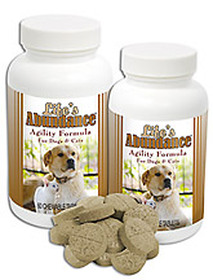
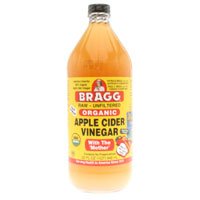
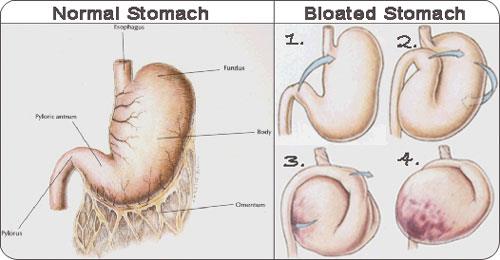
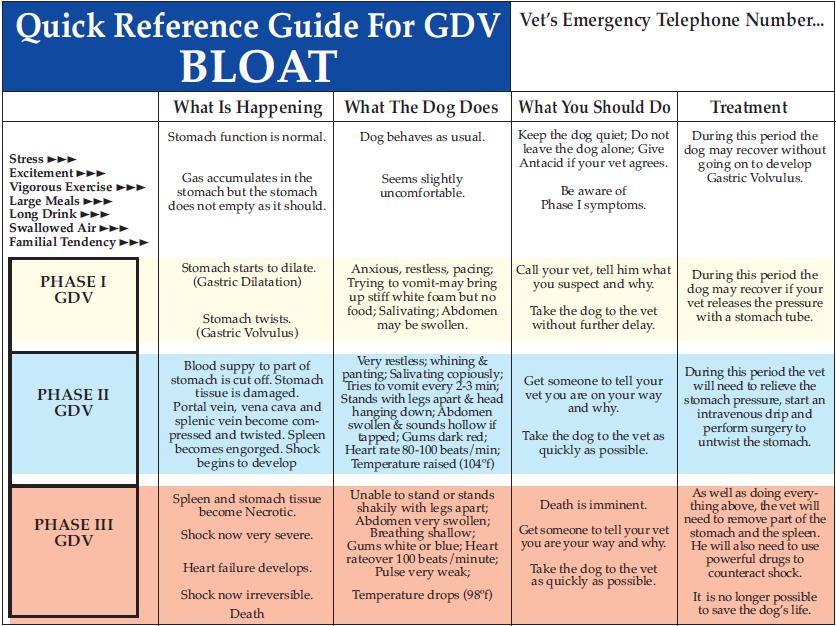
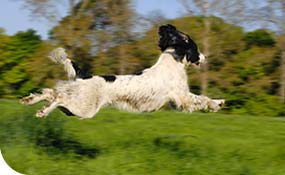
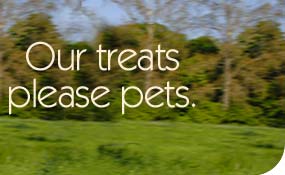
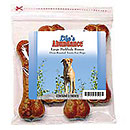
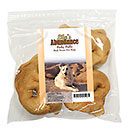
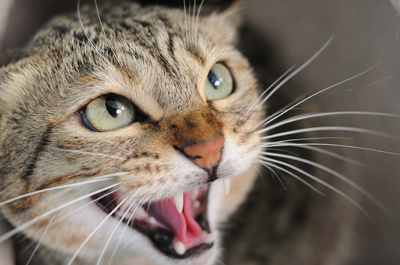
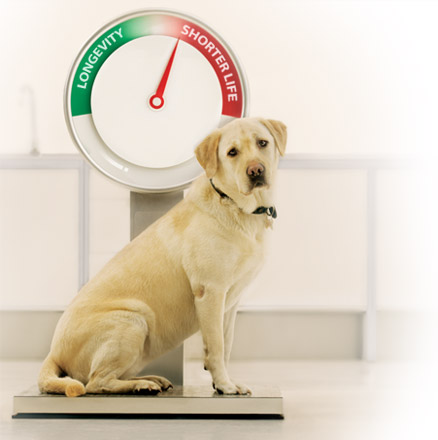
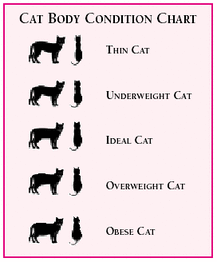
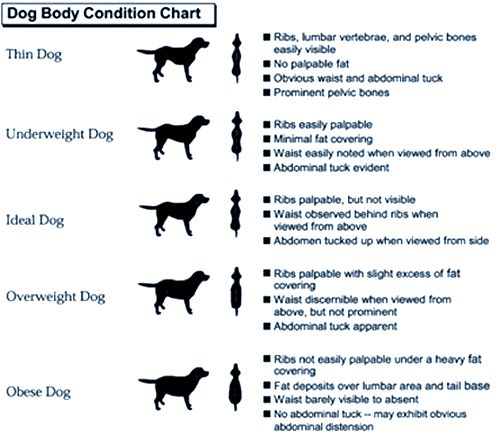




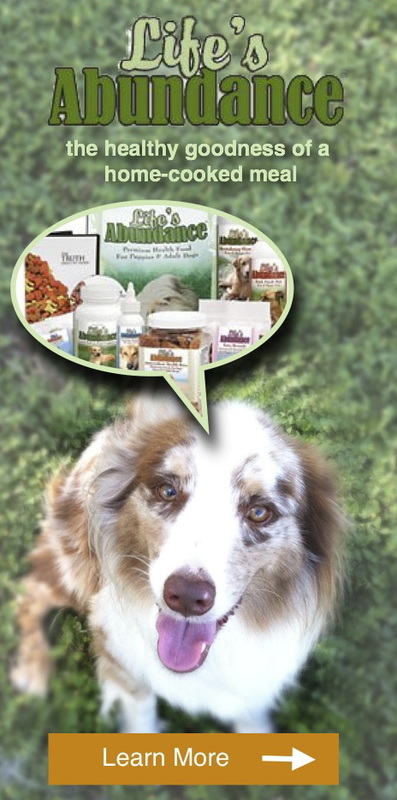

 RSS Feed
RSS Feed




